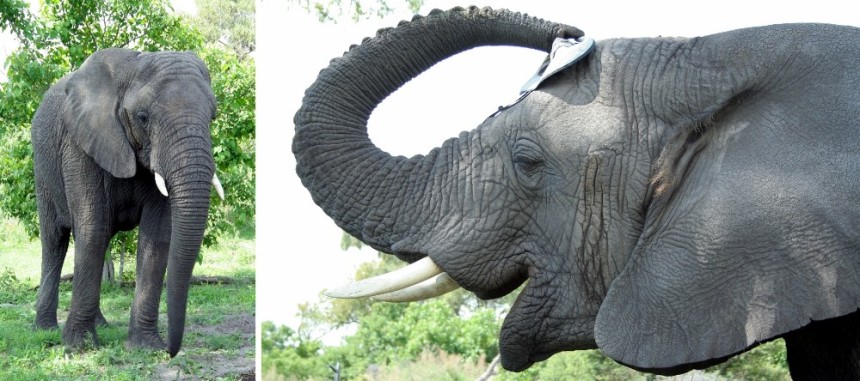Walking with Elephants – yay or nay?
The African elephant – the largest land animal, highly intelligent, living in tight-knit family groups, and among the most endangered. I can happily watch them for hours, while these charismatic and fascinating creatures go about their elephant business. Little babies running clumsily around their siblings, still trying to figure out what this long trunk-like appendix is supposed to do, while mothers and aunts are protecting them from potential danger. The greeting ceremony of family members – the stroking and intertwining of trunks. The rumbling sounds of individuals communicating with their peers sometimes over many kilometres distance.
To come up close and personal with these gentle giants is for many people a lifelong aspiration. A few years ago I was so fortunate to have a truly close-up elephant experience in Botswana, which made me realise that animal interactions can create positive connections and can be responsible at the same time.
The Living with Elephants Foundation adopted three elephants in the early 1990s, when culling operations in South Africa and Zimbabwe left Jabu, Thembi and Morula orphaned. They now call the Okavango Delta their home and share their small interspecies herd with Doug and Sandi Groves, as their human guardians, and several human keepers. Doug says “as human members of our interspecies herd we provide leadership, structure and security in much the same way as parents do for children”.
On a daily basis, this eclectic herd roams the bush of the Okavango Delta from dusk till dawn. They forage for their favourite foods, take mud baths, find water to drink and to cool down from the African heat, and even interact with their wild peers, mostly bull elephants, as breeding herds rather avoid confrontation with strangers. The nights are spent in the safety of a kraal.
Some days they momentarily adopt a few guests from Baines’ and Stanley’s Camps or a group of local school children into the herd and take them on a wilderness walk. A unique opportunity to observe this trio in their natural environment, while Doug provides the educational narrative. This way the trio not only foster respect and reverence, and raise awareness about the plight of the elephant, but also raise the necessary funds to keep this small interspecies herd acting as ambassadors for their species.
Considering elephants live on average to an age of 65 years, Jabu, Thembi (both about 28 years old) and Morula (around 37 years old) will most likely outlive their guardians. Hence, Doug and Sandi are planning to release them back into the wild, at that point when they can no longer look after them, as long as Botswana remains a safe place for elephants.
Even though Doug and Sandi provide one of the most inspiring, educational and ethical elephant interaction experiences for tourists, I still feel undecided whether to endorse the activity. My main motivation for sitting on the fence is that most tourists are unable to distinguish the good from the bad and the downright ugly. Why would the Living with Elephants walks be considered ethical, while most elephant back safaris are not?
Should we say no to all elephant interactions until proper legislation is in place to protect these animals from cruelty? If we do, there is a significant risk that we put those same elephants in jeopardy by taking away the income from tourism.
The unfortunate and unethical animal interaction choices some tourists make is not because they don’t care. A World Animal Protection survey found that nearly 50% of travellers pay for these experiences because they love animals. It is the lack of awareness that needs to be addressed. People need to understand why certain animal interactions, like elephant back safaris and lion cub petting are a big no-no, while others are acceptable.
We need more transparency on animal welfare in terms of what goes on behind the scenes of animal activities. Where did the animals come from? In what conditions are the animals kept? How are they treated? What are they fed, how much and when? How long is their working day? And if they are trained, how is that conducted?
We also need more tour operators to say no to unethical animal activities and explain to their clients why.
Next time you take part in an interactive animal experience, make sure you make an informed ethical choice and support our #animalrightsintourism hashtag.
Words and pictures by Louise de Waal.








I too have a raw group of elephants which were crossing the roads of two state borders.
That’s a beautiful and big breeding herd of elephants. Hope they are protected and safe. Thank you for sharing this video.